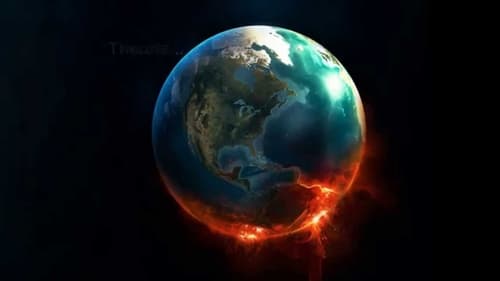
Executive Producer
Conheça as histórias relacionadas com a tempestade mais forte de que se tem notícia que assolou Nova York. Analisamos cientificamente este enorme choque de sistemas meteorológicos mostrando o que acontece quando um furacão tropical se encontra com uma frente fria sobre a região mais densamente povoada dos Estados Unidos.

Producer
Conheça as histórias relacionadas com a tempestade mais forte de que se tem notícia que assolou Nova York. Analisamos cientificamente este enorme choque de sistemas meteorológicos mostrando o que acontece quando um furacão tropical se encontra com uma frente fria sobre a região mais densamente povoada dos Estados Unidos.

Executive Producer
An investigation by Professor of Geological Sciences, Roger Bilham, of the science behind the earthquake and tsunami off the coast of Japan on March 11, 2011.

Executive Producer
Documentário do NatGeo relatando a origem do nosso planeta azul e de toda vida que nele existe. Uma viagem pelos marcantes acontecimentos que tem como resultado o que somos hoje.

Executive Producer
The sinking of the Titanic was far more than a simple accident. It was a tragedy that could have been prevented. It was the result of a long chain of mistakes: a fatal series of avoidable human errors that sent the Titanic and more than half of her passengers to their watery graves. Based around the official inquiry held immediately after the event, plus evidence that's come to light since the wreck of the Titanic was discovered in 1985, National Geographic, in this drama-documentary special, answers the question: Who Sank the Titanic?

Executive Producer
On April 10, 1912, the RMS Titanic embarked on its maiden voyage, sailing from Southampton, England, to New York City. One of the largest and most luxurious passenger liners at the time, the Titanic was also equipped with watertight compartments, which led many to consider the ship unsinkable; an anonymous deckhand famously claimed that “God himself could not sink this ship.” On April 14, however, the ship struck an iceberg, and early the next day it sank. Some 1,500 people perished.

Executive Producer
On the morning of August 27, 1883, the rumbling volcano of Krakatoa stood more than 6,000 feet high, with a diameter of approximately 10 miles. Later that day, this giant cone exploded so violently it was literally blown away. The effects of the volcanic explosion caused a tidal wave more than 140 feet high; one ship was carried more than two miles inland. Hail-sized stones fell as far as 100 miles away, and the city of Jakarta fell into total darkness. For many of the area's inhabitants, Armageddon had arrived. Over 36,000 people were killed immediately, and countries all over the globe were affected by the volcano's devastating after-effects.






